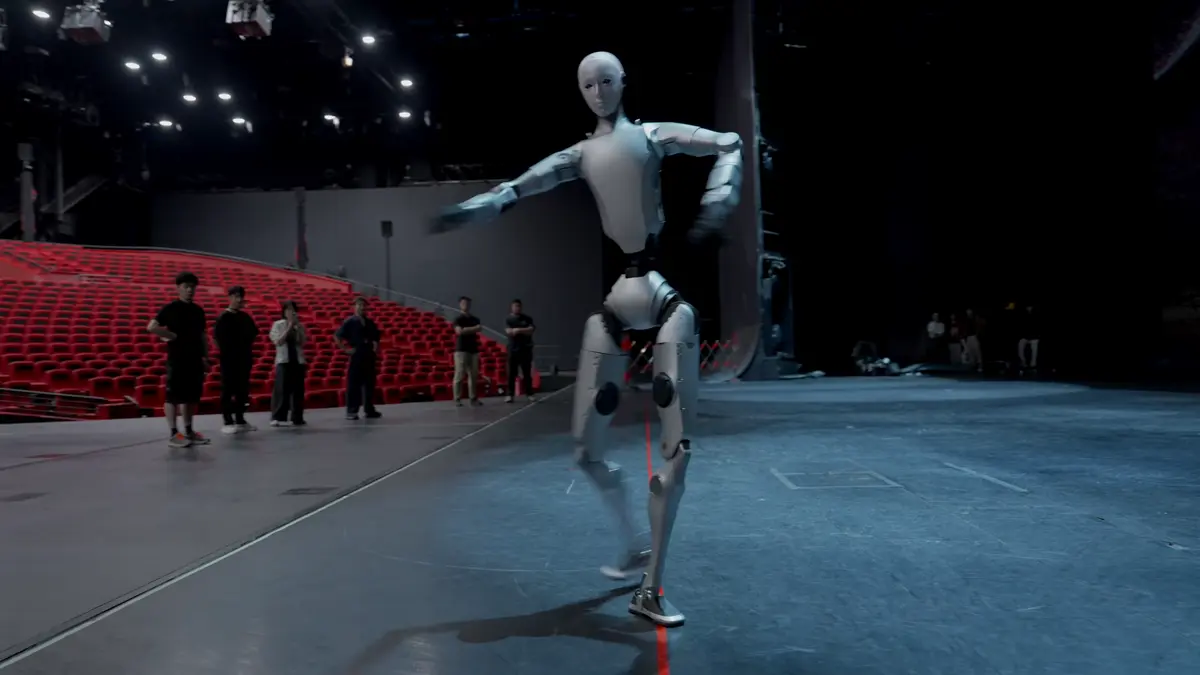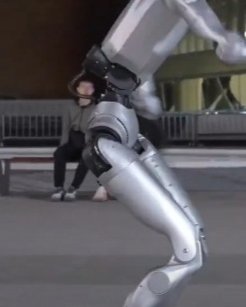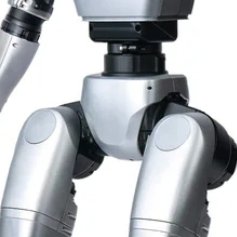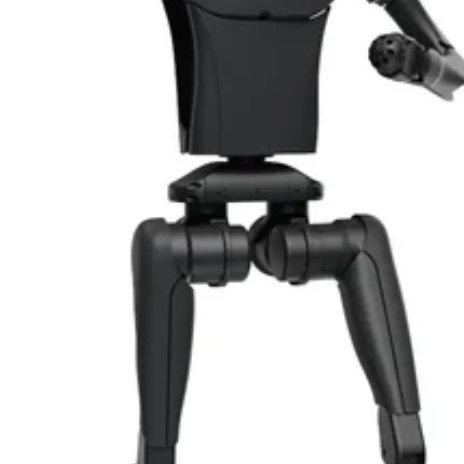- Published on
Unitree Unveils H2, a Full-Sized Humanoid Successor to the H1

Unitree Robotics has taken the wraps off its latest full-sized humanoid, the H2, revealing the new flagship model in a social media video. Billed as the "H2 Destiny Awakening," the robot stands 1.8 meters tall (5' 11") and weighs 70 kg. The debut video showcases the H2 performing fluid dance and kung-fu-like movements on a stage, signaling a focus on dynamic agility.
Update (Oct. 21, 2025): Following the H2's debut, new official specifications and expert analysis from its public expo appearance have provided a much clearer picture of its engineering.
We've published a full technical deep dive on its confirmed 31-DOF architecture, 3-DOF serial-stack waist, 2-DOF neck, and the new tendon-driven leg design.
Fulfilling an Ambitious Roadmap
The H2's arrival fulfills a timeline laid out by Unitree CEO Wang Xingxing earlier this year. While full specifications were not initially available, newly released data confirms a significant leap in articulation and capability over its predecessor, the H1. The robot's design philosophy appears to have pivoted, trading the H1's world-record speed for a more versatile and dexterous platform.
From Speed to Skill: H2's Technical Specifications
A detailed comparison with the H1 reveals a strategic evolution. While the H1 was celebrated for its record-breaking speed of 3.3 m/s, the H2 is rated for under 2 m/s. This trade-off appears to have been reinvested directly into articulation and strength.
The H2's total degrees of freedom (DOF) see a major upgrade, particularly in the limbs:
- Legs: Each leg now has 6 DOF, up from the H1's 5, thanks to an added joint in the ankle for more complex foot articulation.
- Arms: Each arm has been upgraded from a basic 4-DOF configuration to a full 7 DOF (3 in the shoulder, 1 in the elbow, and 3 in the wrist). This enables human-like range of motion critical for manipulation tasks.
- Payload: This enhanced articulation is backed by significant strength. Each arm has a rated payload of 7 kg (15.4 lbs) and a peak capacity of 21 kg (46.3 lbs).
This evolution is built on key mechanical changes. The H2 adopts the 'F-A-R' (Flexion-Abduction-Rotation) hip configuration, an industry trend that allows for better packaging and is now standard across all of Unitree's current robots. This move away from the H1's 'R-A-F' hip, combined with a new 3-DOF serial stack waist, provides the foundation for the robot's impressive new capabilities.
Looks like the new Unitree H2 has abandoned the R-A-F hip of H1 and adopted the F-A-R hip of G1 and R1 Their preferred hip design is now F-A-R 🧵
Unitree unveils H2, the next-generation full-size humanoid robot. 5' 11" (180cm) tall and weighing 153 lb (70kg).
For developers, the H2 offers a powerful computing platform, with options to include up to three Nvidia Jetson Orin NX modules alongside the standard Intel Core i5/i7 processors. Furthermore, the robot's capabilities can be extended with optional dexterous hands, a feature absent on the H1.
A Two-Pronged Strategy
The launch of the H2 solidifies Unitree's aggressive strategy to capture the market from two distinct angles. The H2 represents the company's high-end offering, while the recently revealed Unitree R1 targets the mass market of developers and researchers with its radically lower price point.
The 1.2-meter R1, which was recently recognized by TIME Magazine as one of the Best Inventions of 2025, is designed to lower the barrier to entry for humanoid robotics research. By pairing the accessible R1 with the advanced H2, Unitree is positioning itself to cater to the full spectrum of the industry, from foundational education to high-performance commercial ventures.
The Question of the Mask
One of the most striking elements of the H2's debut is its face—or lack thereof. In the video, the robot wears a mask with stylized human facial features. It is currently unclear whether this is a temporary flourish for the "Destiny Awakening" theme or an integral part of the product's intended design for human-robot interaction. This aesthetic choice is a notable departure from the more industrial designs of the H1 and R1.
As Unitree continues its rapid pace of development, the H2 stands as a major milestone. The success of its dual-platform strategy will depend on the hardware's capabilities and the company's ability to cultivate a secure and robust software ecosystem for the developers it aims to attract.
Video reveal
Share this article
Stay Ahead in Humanoid Robotics
Get the latest developments, breakthroughs, and insights in humanoid robotics — delivered straight to your inbox.


